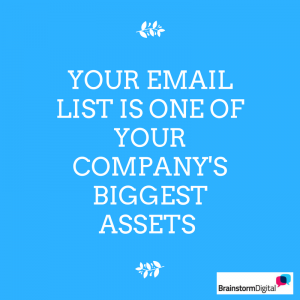
On January 3, 2000, I was watching TV alone at home, when suddenly the television cut out and the lights went off.
I made my way to the window. The entire street was dark.
A sharp intake of breath.
This was it…..
The ‘millenium bug’ had arrived, albeit three days late!
It turns out the forecasts were true after all. Computers could not transition to dates starting with ‘2000’, and were malfunctioning…
It was the end of civilization.
I slowly made my way back to the draw where, several days earlier, we had stashed candles and flashlights. We were prepared….
And then the lights flicked back on.
Turns out it wasn’t the end of civilization after all. Just a highly irregular blackout….
We can laugh at ‘Y2K’ now, but for a few short months, the world went mad.
Almost everyone believed there was at least a chance we were going to be thrown back to a pre-technological age. The extremists learned how to ride horses, shoot arrows and hoarded food and even those who claimed to be sceptics put aside candles and a few cans, “just in case”.
There are no atheists in foxholes……
The hysteria back then reminds me very much of the hysteria we’re witnessing right now in the business community, around GDPR.
Businesses are committing suicide… Unnecessarily
For months now, business owners and marketing teams have been scrambling around to prepare for this upcoming calamity, as if the end of the world was nigh.
They have updated privacy policies, instituted strict double-opt-ins to their email lists, and worst of all, badgered consumers with those horrible form letters asking people to opt in again to their email list, or face being unsubscribed.
Everyone’s at it: Local butchers asking their customers whether they want to stay on their mailing list. Small charities practically begging past donors to stay in touch. Larger companies emailing lists compiled over a decade or more.
It will be interesting to see the stats when someone finally runs a survey, but I would be shocked if more than 5-10% of people on most email lists are responding to those notes.
In other words, many businesses are losing practically their entire contact lists.

Since your email database – your list of past clients, leads and prospects – is one of every business’s biggest assets, they are effectively committing business suicide.
All this would be understandable and commendable if it were legally necessary, but in most cases, it’s not.
Most companies do have to make adjustments for GDPR, eg. typically, privacy policies have to be updated.
But while there are exceptions, most businesses should be able to continue emailing most of their existing list without forcing people to opt in again. There are six pretty broad criteria allowing companies to do so – see the ICO website for further details.
Companies jumped the gun with GDPR
The confusion arises for two reasons. First, the GDPR regulations were not finalized until relatively recently, leading to ambiguity and confusion about what actions were going to be necessary. And so some jumped the gun.
Too many companies wiped thousands of people off their databases, shifted their focus away from email and even stopped emailing altogether (!) before the terms of GDPR were clear.
But the second is simple mass hysteria. Once some companies started asking their subscribers to opt in again to their email lists, others assumed this was the correct course of action, and followed suit.
They didn’t understand that many of these companies were acting unneccesarily. Or, in some cases, that these companies had legitimate reasons to ask people to opt in again, which did not apply to them.
Soon the flood of opt-in emails was impossible to stop.
Everyone became convinced that the law told them they had to get subscribers to opt in again, even though this was rarely the case. As the May 25 deadline gets closer, cue panic.
Do not follow the crowds blindly
The lesson is clear: Do not follow the crowds blindly.
When it comes to legal issues – which GDPR is – invest in proper legal advice.
And when it comes to marketing issues, do not assume that your peers, your competitors and even market leaders know what they are doing and are worth copying.
There are strong trends in the marketing world, and it’s easy to feel that if you don’t jump on the bandwagon, you’re going something wrong….
That if “everyone” is suddenly on Snapchat, that’s where your company needs to be, too….
Or that if all your competitors are sending out dry email newsletters, you should too.
But in all too many cases, they are just making it up as they go along, figuring out their own path, making their own mistakes and applying strategies which do not apply to you.
So do not assume they know better.
Seek expert advice
Seek out your own expert advice from businesses that have built the kind of company you want. Stay focused strongly on core strategy instead of getting seduced by shiny new tactics, and above all, maintain a healthy scepticism about what other companies do online, unless you have seen clear proof that it has impacted their bottom line.
In just a few months’ time, when all this has died down, I have a feeling that many people will be looking back at the panic around GDPR with puzzlement.
Companies will not be able to believe they allowed most of their subscribers to disappear, for no good reason; and they will not believe they allowed themselves to be led astray by the spirit of mass hysteria, without investigating the legal issues properly.
Luckily, unlike Y2K, the end of world is not at stake – “merely” the ability of your business to market itself freely over the most profitable of all digital channels, email.
On second thoughts, for many companies that is the end of the world.
So do not act in haste.
Before you hit ‘send’ on that opt-in email, contact your lawyer, to make sure you understand how GDPR applies to your organization…
And in the best British tradition, keep calm and carry on!
Take it further: How have you prepared for GDPR? Do you think that that the fuss around it is overblown – or in proportion? Let me know in the comments!






